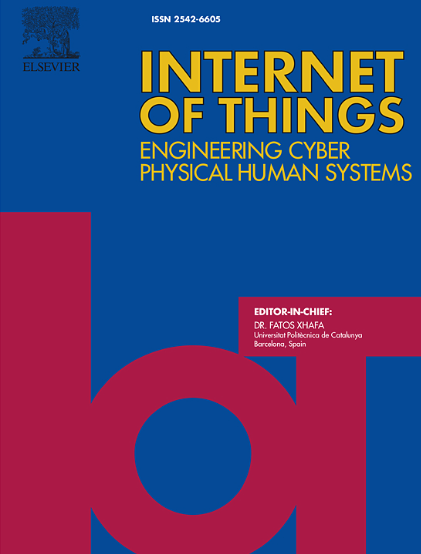Accurate low-delay QRS detection algorithm for real-time ECG acquisition in IoT sensors
IF 6
3区 计算机科学
Q1 COMPUTER SCIENCE, INFORMATION SYSTEMS
引用次数: 0
Abstract
QRS detection is crucial for heart function diagnosis and sports science. This paper presents a real-time QRS detection algorithm designed for low-cost wearable embedded platforms, enabling novel applications such as closed-loop stimulation for acute diseases, precise monitoring in sports science, and home health monitoring. This algorithm locates the R-peak in real-time, with a mean delay of 0.405 s, throughout the MIT-BIH dataset. We achieve high accuracy with minimal compromise to computational power or delay, using a two-step, find and validate method. Initially, we identify potential QRS candidates by detecting zero-crossing points through filtering and convolution processes. Next, we validate these candidates by comparing them with previous R-R intervals (RRI), adaptively comparing values to minimize T-wave errors and reject adjacent noise components. We introduced a novel algorithm based on RRI periodicity, simplifying the computational load while enhancing detection accuracy. By using the MIT-BIH dataset, we detected the QRS complexes with a 99.75% accuracy. Furthermore, we embedded the algorithm into an Arm Cortex-M4 microcontroller unit (MCU) with a 64 MHz clock, maintaining identical accuracy. We demonstrate live-stream QRS detection by generating MIT-BIH waveforms using a function generator and processing them with the MCU's on-chip 10-bit analog-to-digital converter (ADC), achieving 99.71% accuracy. Finally, we validate our work with a miniaturized flexible electrocardiogram (ECG) sensor in a form factor of a bandage, wirelessly linked to a smartwatch for real-time ECG monitoring and R-peak detection. A cloud connectivity network is established concluding that this work is suitable for practical monitoring applications.
面向物联网传感器实时心电采集的精确低延迟QRS检测算法
QRS检测在心功能诊断和运动科学中具有重要意义。本文提出了一种用于低成本可穿戴嵌入式平台的实时QRS检测算法,可实现急性疾病闭环刺激、运动科学精确监测和家庭健康监测等新应用。该算法在整个MIT-BIH数据集中实时定位r峰,平均延迟为0.405 s。我们使用两步查找和验证方法,以最小的计算能力或延迟实现高精度。最初,我们通过滤波和卷积过程检测零交叉点来识别潜在的QRS候选者。接下来,我们通过与之前的R-R间隔(RRI)进行比较来验证这些候选值,自适应地比较值以最小化t波误差并拒绝相邻的噪声分量。提出了一种基于RRI周期性的新算法,简化了计算量,提高了检测精度。通过使用MIT-BIH数据集,我们检测到QRS复合物的准确率为99.75%。此外,我们将算法嵌入到具有64 MHz时钟的Arm Cortex-M4微控制器单元(MCU)中,保持相同的精度。我们演示了使用函数发生器生成MIT-BIH波形并使用MCU片上10位模数转换器(ADC)对其进行处理的实时流QRS检测,实现了99.71%的精度。最后,我们用绷带形状的小型化柔性心电图(ECG)传感器验证了我们的工作,该传感器与智能手表无线连接,用于实时ECG监测和r峰检测。建立了一个云连接网络,表明该工作适合实际监测应用。
本文章由计算机程序翻译,如有差异,请以英文原文为准。
求助全文
约1分钟内获得全文
求助全文
来源期刊

Internet of Things
Multiple-
CiteScore
3.60
自引率
5.10%
发文量
115
审稿时长
37 days
期刊介绍:
Internet of Things; Engineering Cyber Physical Human Systems is a comprehensive journal encouraging cross collaboration between researchers, engineers and practitioners in the field of IoT & Cyber Physical Human Systems. The journal offers a unique platform to exchange scientific information on the entire breadth of technology, science, and societal applications of the IoT.
The journal will place a high priority on timely publication, and provide a home for high quality.
Furthermore, IOT is interested in publishing topical Special Issues on any aspect of IOT.
 求助内容:
求助内容: 应助结果提醒方式:
应助结果提醒方式:


